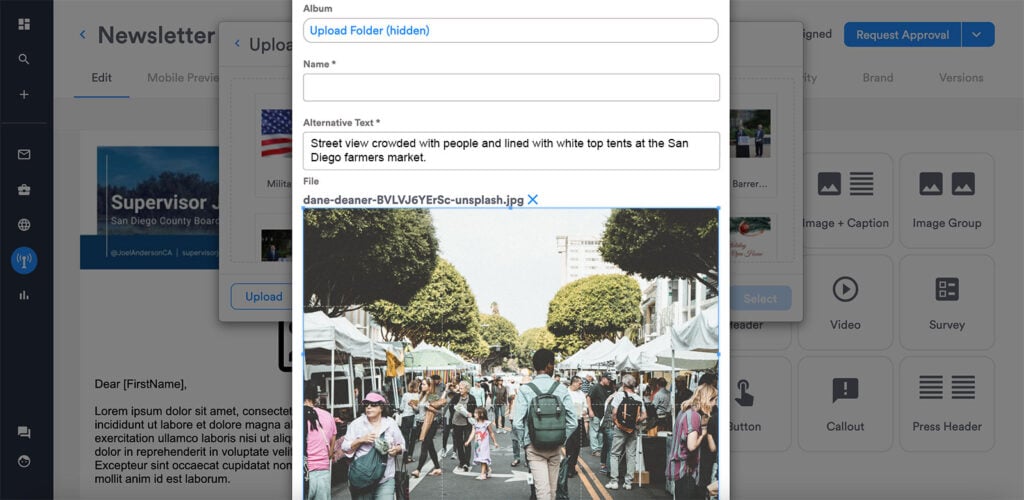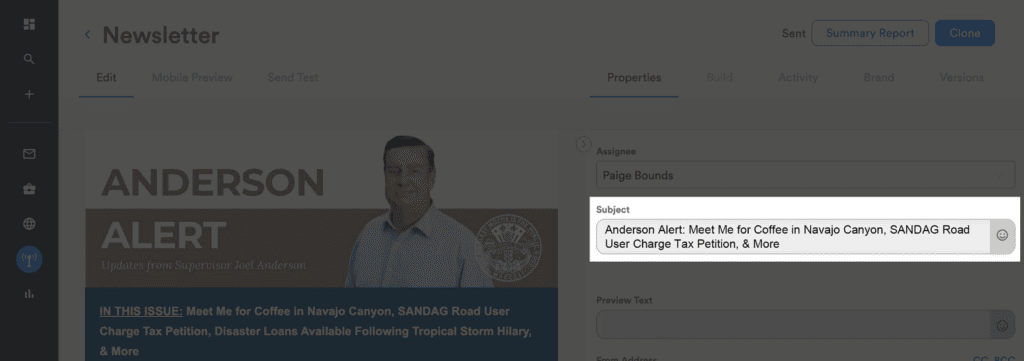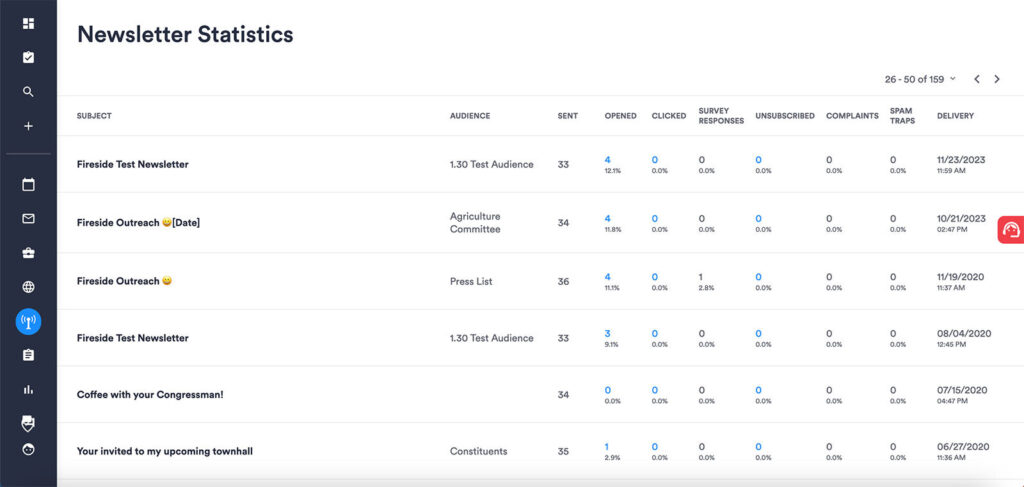 Digital newsletters are powerful tools for building relationships with constituents, highlighting your good work, and keeping them informed about the latest legislative developments. In short, they tell people you’re showing up to do the job you were elected for.
Digital newsletters are powerful tools for building relationships with constituents, highlighting your good work, and keeping them informed about the latest legislative developments. In short, they tell people you’re showing up to do the job you were elected for.
By virtue of their consistency, newsletters also build trust. “Reaching out when you don’t need something is really meaningful,” says Meredith Glacken, founder and principal at Foresight Messaging. Through newsletters, elected officials proactively communicate what they’re doing on constituents’ behalf.
Moreover, the increasing segment of millennial voters who grew up with digital platforms expect regular online outreach. “Digital connection really is, at this point, an indispensable part of every communications plan. It is, without dispute, absolutely necessary to stay in touch with the people you’re serving,” says Glacken, who worked on political campaigns in a dozen states, did two tours on Capitol Hill, and headed speechwriting for the U.S. Secretary of Commerce.
Because constituent newsletters play a lead role in your brand portfolio, the stakes are high for getting yours right. Here are five best practices to make sure you nail it, every time.
1. Put Readers First
As you craft your newsletter, keep your audience in mind every step of the way. That means respecting their time by not overloading them with information. Think about a constituent coming home from a busy day at work. “It’s not always at the top of their list to check in on what their elected representative is doing,” Glacken notes. So they need to be drawn in with compelling stories about issues affecting their lives.
“You want to get to the punchline as quickly as you can and give people the opportunity to learn more if they want to,” she adds — which you can do by integrating plenty of relevant links.
To increase engagement, include striking photos or videos that highlight the people impacted by your office’s work, Glacken recommends.
2. Ensure Accessibility
Use images to supplement — not replace — text. “Images for calls to action or large blocks of text should be avoided,” says Stephanie Casassa, lead web developer at Fireside. “Some people have images completely disabled in their email clients or may have a vision impairment that prevents them from being able to view the image.”
To optimize accessibility, always add descriptive alt text to images and use a high degree of color contrast. In addition, “ensure readability by choosing web-safe fonts, a reasonable font size of at least 12-point, left-aligned text (instead of centered or justified), written in plain language, and broken up into short paragraphs,” Casassa advises.
Finally, choose a design template that looks great on computers, tablets, and phones. “About half of your constituents will read the email on their mobile device,” Casassa says.

3. Keep It Short and Skimmable
After Michael Botello, communications director for San Diego County supervisor Joel Anderson, launched a monthly version of Anderson’s constituent newsletter, he noticed people were clicking only the links toward the top, indicating few were reading until the end.
He switched to sending shorter emails every other week. Each newsletter now includes only three or four stories. “We found that worked much better,” Botello says.
Botello uses Fireside’s newsletter editor tool to build effective emails. “They have a really robust program at the federal level — and of course, they’ve taken that platform and adapted it for more local governments,” he says.
Separating items with clear visual cues makes it easy for people to scan for elements of interest. Botello relies on Fireside’s spacing function to accomplish this, along with integrating headers and colors.
“Graphically, headlines should be large and stand out,” Glacken says. “And the content should be concise and impactful, utilizing basic graphic elements like underline, italics, or bolded text.”
4. Create Enticing Subject Lines
Without a strong subject line, your content risks going unread. The key is to entice constituents so they click on your email. “Questions are always great, and so is anything relevant to current affairs or intel people don’t already have,” Glacken says.
“Subject lines are the trickiest part of emails to me,” says Botello. While engaging people is important, frequently using buzzwords or emotive language could cause your email to get flagged as spam — or annoy your audience. “I suggest not going over the top, not saying, ‘Open this email for the best news ever,’” he says, “but rather striking a balance between consistency, capturing people’s attention, and making sure you’re not getting caught in people’s spam filters.”
One way Botello achieves consistency is by using his newsletter’s name — The Anderson Alert — in every subject line. This makes it recognizable in people’s inboxes.

5. Monitor Meaningful Metrics
Monitor open rates to gauge an email’s overall performance and track bounce rates to help ensure your lists are in good shape.
For purely informational newsletters, you might assess how much time people spend reading them. For newsletters focused on calls to action, you can monitor click-through rates, along with how many users go on to take the intended action. “The great thing is, Fireside has lots of tools you can use and reporting features built in,” Botello says. For instance, Fireside’s survey function makes it easy to ask people which content best serves them.

Create Standout Newsletters with Fireside
Botello suggests using every functionality you have available to build the best newsletter possible. For him that includes Fireside’s accessible designs across platforms, attractive buttons to call out action items, a central hub for all constituent data, sophisticated segmenting tools allowing targeted messages to key audiences, and more.
“All of it works together to make for a more engaging piece,” Botello says.
Build trust with constituents by communicating consistently, not reactively. Fireside has the drag-and-drop functionality of leading newsletter tools and is integrated with our contact database for simple targeting and retargeting. This means you can easily segment audiences to send tailored and proactive messaging. Find out how Fireside can help you build an effective newsletter and bolster your brand.
Request a Demo
See how easy managing your constituents, casework, and outreach can be with Fireside.
Request a demo and learn how Fireside can help you:
- Save time on organizing your inbound messages
- Streamline your communication workflows
- Strengthen relationships with constituents
- Target and tailor your outreach efforts

